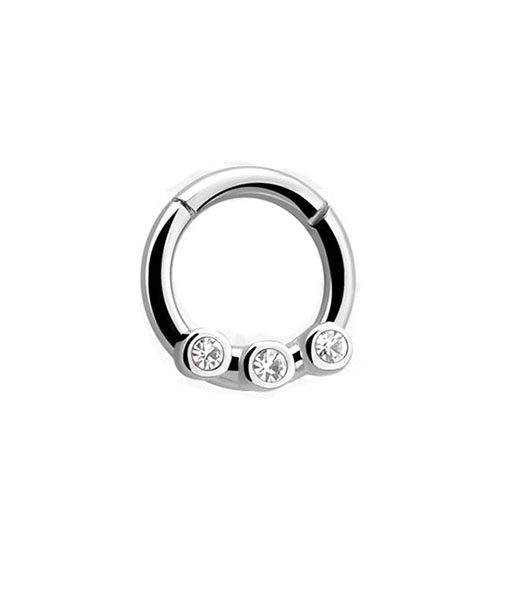The Ultimate Guide to Septum Piercing: Everything You Need to Know
What Is a Septum Piercing?
A septum piercing is a piercing that goes through the thin wall of tissue (called the columella) between your nostrils. Contrary to popular belief, the piercing doesn’t go through the cartilage itself but through the softer, fleshy part just beneath it, known as the "sweet spot." This placement makes the procedure less painful than many imagine and allows for flexibility in jewelry choices.
The Procedure: What to Expect
The process of getting a septum piercing is relatively quick and simple, typically lasting only a few minutes. First, the piercer will sterilize the area to prevent infection. Then, they will use a clamp or guide tube to stabilize the septum before piercing it with a hollow needle. Once the needle has gone through the septum, the piercer will insert the jewelry, usually a circular barbell or captive bead ring.
As for the pain, septum piercings are generally considered to be moderately painful, but the experience varies from person to person. Since the needle passes through the thin skin rather than cartilage, the discomfort is often described as a brief sting followed by mild soreness.
Healing and Aftercare
Proper aftercare is essential for any piercing, and septum piercings are no exception. The average healing time for a septum piercing is around 6 to 8 weeks, though full healing can take up to 6 months. During the healing period, it’s important to avoid touching the piercing unnecessarily, as bacteria from your hands can lead to infections.
Here are some essential aftercare tips:
Clean the piercing twice a day using a saline solution or a specialized piercing cleaner. Avoid using alcohol-based products, as they can irritate the skin.
Avoid twisting or moving the jewelry during the healing process. While it might be tempting to adjust or play with the piercing, this can slow healing and increase the risk of infection.
Stay away from harsh environments, such as swimming pools or hot tubs, which can expose your piercing to bacteria.
Avoid makeup or skincare products around the area, as they can cause irritation.
If you notice unusual swelling, redness, or discharge, consult a professional piercer or healthcare provider to rule out infection.
Choosing Jewelry for Your Septum Piercing
One of the best things about septum piercings is the variety of jewelry options available. You can start with a simple horseshoe or captive bead ring, but as your piercing heals, Piercing Jewellery you’ll have the freedom to experiment with different styles and materials.
Horseshoe barbells are a popular choice because they can be flipped up into the nose, making the piercing more discreet when needed.
Captive bead rings offer a classic look and come in a variety of metals and bead designs.
Clickers are a stylish option for those who want more decorative designs. These hoops click into place and often feature intricate patterns or gemstones.
Segment rings offer a sleek and continuous design, giving the appearance of a complete circle without visible breaks.
Always make sure to choose high-quality materials like surgical steel, titanium, or 14k gold to minimize the risk of allergic reactions or irritation.
Risks and Considerations
Like any body modification, septum piercings come with risks, but these can be minimized with proper aftercare and choosing an experienced piercer. Common risks include infection, migration (when the piercing shifts from its original position), and rejection (when the body pushes the jewelry out).
